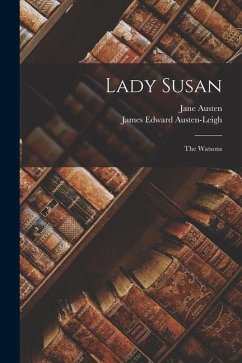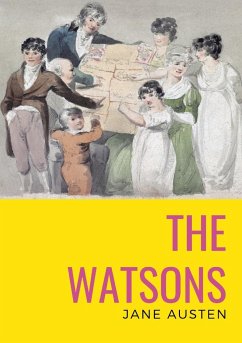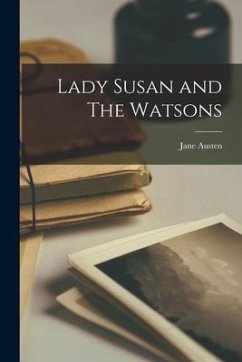
Lady Susan, The Watsons
With A Memoir By Her Nephew (1892)
Versandkostenfrei!
Versandfertig in 1-2 Wochen
32,99 €
inkl. MwSt.

PAYBACK Punkte
16 °P sammeln!
Lady Susan, The Watsons: With A Memoir By Her Nephew (1892) is a collection of two unfinished novels by the renowned English author Jane Austen. The first novel, Lady Susan, is an epistolary novel that follows the manipulative and scheming Lady Susan Vernon as she tries to secure a new husband for herself and a marriage for her daughter. The second novel, The Watsons, is a story about a family of four sisters who must navigate the social and economic challenges of finding a suitable husband in early 19th century England. The collection also includes a memoir written by Austen's nephew, which p...
Lady Susan, The Watsons: With A Memoir By Her Nephew (1892) is a collection of two unfinished novels by the renowned English author Jane Austen. The first novel, Lady Susan, is an epistolary novel that follows the manipulative and scheming Lady Susan Vernon as she tries to secure a new husband for herself and a marriage for her daughter. The second novel, The Watsons, is a story about a family of four sisters who must navigate the social and economic challenges of finding a suitable husband in early 19th century England. The collection also includes a memoir written by Austen's nephew, which provides insight into the life and writing process of the beloved author. The memoir offers a glimpse into Austen's personal life, including her relationships with family and friends, as well as her literary influences and inspirations.Overall, Lady Susan, The Watsons: With A Memoir By Her Nephew (1892) is a fascinating collection of Austen's work that offers readers a deeper understanding of her writing and her life. It is a must-read for fans of Austen's novels and anyone interested in the history and culture of early 19th century England.This scarce antiquarian book is a facsimile reprint of the old original and may contain some imperfections such as library marks and notations. Because we believe this work is culturally important, we have made it available as part of our commitment for protecting, preserving, and promoting the world's literature in affordable, high quality, modern editions, that are true to their original work.













